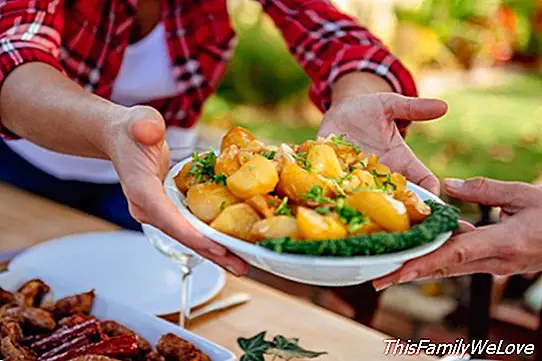Starters and accompaniments, how do they eat?

The trouble can be great if in a meeting we do not know how to properly bring to our mouth some prawns or a succulent piece of ham. In most cases the saying "where you go do what you see" usually works well, but it is never wrong to take into account these considerations of good manners at the table.
Rules for eating appetizers and accompaniments
Olives
If they are served to nibble, we can take them with our fingers, or puncture them with a toothpick. If they are part of the dish or salad, they are pricked with the fork.
Sausages
If they are used to chop, we can mount the slices on a piece of bread small enough to take a bite. In any case, we must remove the skin when it is hard, and we will do it with the tips of the fingers, never with the teeth. The trick is to hold the napkin and the sausage in the left hand and operate with the right. The bread is taken later and, if not, it is caught. Unless we like juggling.
When the sausage is served on the table, we will separate the skin on our plate, helping with the tip of the knife, while we prick it with the fork.
Canapes
Since they are taken standing and while a conversation is being held, we must get used to avoiding "mishaps". It is better to stand near a shelf on which to support the cup if we want to take something from a tray. Let's not go for the big canapé: the small one is less dangerous and consumes more quickly, without taking risks that something falls or we have to talk with the mouth full. It is advisable to take the canapés with the left hand and leave the right clean, to be able to greet, take the cup and hold the napkin.
Asparagus
Regarding such a precious vegetable there is more than one appearance. Some people argue that they should eat by picking them with the fingers of the right hand, wetting the soft part in the sauce. In fact, in some places they are served with the stems in that sense. Others think that the correct way is to use the own clamps. And, between both positions, there is another that defends the use of the knife and the fork. We can act as we see fit, keeping in mind that if there are no washings, we will not be able to use our hands.
Prawn cocktail
With spoon, directly from the cup.
Buns
They must be broken with the hand, in small pieces that we can introduce once in the mouth. We should never allow ourselves to partially bite a piece. Bread is an accompaniment, so, no matter how hungry we are, it would be frowned upon to eat it whole before the first course, unless there is some pâté or sausage to accompany it. Although it is a slight fault, in elegant environments it is badly seen to dip the sauces.
Patés
They anoint themselves with the knife that each one has, maintaining the norm that everything must fit in one mouthful.
Lemon
We will hold it with the right hand, pressing on the fork and pressing so that the juice comes out on the food that we want to season. We must do it without splashing anyone, so it is best to press the lim * n down.
Vegetables and potatoes
They always eat with a fork, and we will never break them with the knife. Artichokes are an exception, because if they are natural they are eaten by leaves and with fingers, separating the tender part. The heart is taken with a knife and fork.
Teresa García-Morato
Advice: Benigno Sáez Y Antonio Crespillo




